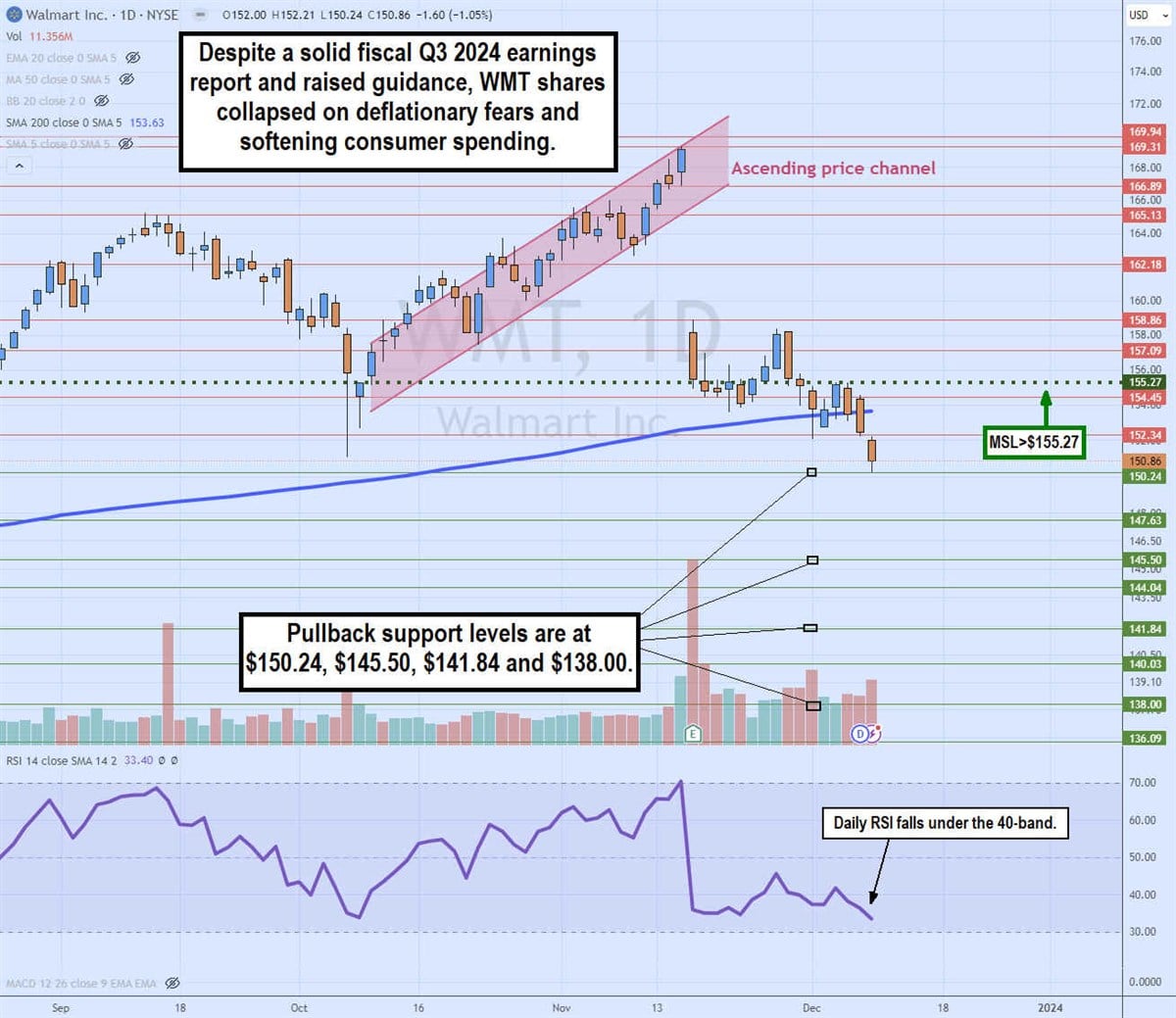Is Walmart too big to prevail? Walmart Inc. (NYSE: WMT) is big, to say the least. It is the largest retailer in the world. It's the largest importer of goods in the United States. It is...
By Jea Yu
This story originally appeared on MarketBeat

Walmart Inc. (NYSE: WMT) is big, to say the least. It is the largest retailer in the world. It's the largest importer of goods in the United States. It is one of the largest consumer discretionary sector companies fiercely competing with Amazon.com Inc. (NASDAQ: AMZN). A strong dollar is a friend to Walmart as it imports goods cheaper and sells for a larger profit in the United States. Walmart is the largest employer in the United States, with 1.6 million workers, and the fourth largest in the world, with 2.3 million global workers. Some might say Walmart falls into the category of "too big to fail ."However, after its recent earnings reaction, investors may be wondering if Walmart has grown too big to prevail.
Window dressing accentuates the divergence.
While competitors like Target Co. (NYSE: TGT) experienced an 11% price gap that grew to a 21% gain in the following days, Walmart shares gapped down 4.8% on its fiscal Q3 2024 earnings release and proceeded to sell off 10% in the following days despite the S&P 500 index hitting yearly highs. This stark negative correlation is rare as these two retailers tend to move together in lockstep. However, this time of the year can cause portfolio managers to frantically dump the losers and buy the winners in the final window dressing period of the year. It's worth noting that WMT shares are still up 5% year-to-date (YTD) compared to TGT shares trading down 10.9% YTD. Check out the sector heatmap on MarketBeat.
Growth is slowing but still growing.
On Nov. 16, 2023, Walmart released its fiscal third-quarter 2024 results for the quarter ending October 2023. The company reported an earnings-per-share (EPS) profit of $1.53 versus consensus analyst estimates for a profit of $1.52, a penny beat. Revenues climbed 5.2% YoY to $160.8 billion, beating analyst estimates of $159.65 billion. Consolidated gross margins rose 32 bps.
Comparable sales and e-commerce growth
U.S. comparable sales rose 4.9%, led by grocery and health wellness products. E-commerce spiked 24%, led by pickup and delivery. General merchandise grew low single-digit, reflecting softness in discretionary categories like apparel, home and toys. While unseasonal weather caused November sales to go up, Walmart expects sales growth to moderate in Q4 as grocery inflation normalizes to historic levels. Sam's Club U.S. comp sales without fuel rose 3.2%, and e-commerce rose 16% YoY.
Raised guidance still below analyst expectations
Walmart expects fiscal full-year 2024 EPS of $6.40 to $6.48, up from previous guidance of $6.36 to $6.46 but still shy of the $6.50 consensus analyst estimates. Fiscal full-year 2024 revenues are expected to rise 5% to 5.5%, up from 4% to 4.5% in previous estimates or $641.6 billion to $644.6 billion versus $642.43 billion.
Deflation will pressure the company.
Walmart CEO Doug McMillon noted that inflation is starting to fall for some grocery items, including chicken, seafood and dairy, but not so much with dry grocery. General merchandise prices are also falling, causing retailers to roll back prices. Consumers will benefit from the effects of deflation, which will put more pressure on the company to sell more products. McMillon stated, "In the U.S., we may be managing through a period of deflation in the months to come, and while that would put more unit pressure on us, we welcome it because it's better for our customers." Investors didn't like this comment and reacted by selling.
Insights on consumers
CEO McMillon made many points in a CNBC interview following the earnings release. He emphasized that consumers are price-sensitive right now. Even richer consumers are shopping at Walmart for value. Foot traffic has increased with faster growth for curbside delivery. General merchandise is starting to experience price deflation. Next year could be a deflationary environment, but the company is not bracing for a recession and still expects growth in 2024.
Walmart analyst ratings and price targets are at MarketBeat. Walmart peers and competitor stocks can be found with the MarketBeat stock screener.

Daily ascending price channel breakdown
The daily candlestick chart for WMT illustrates the ascending price channel heading into the earnings as shares hit 52-week highs on the heels of Target's strong earning reaction. However, the sentiment reversed quickly upon the release as shares gapped down nearly 5% and proceeded to continue selling off 10% through the daily 200-period moving average support at $153.63. The daily market structure low (MSL) trigger formed at $155.27 but could not trigger. The daily relative strength index (RSI) plunged from the 70-band towards the 30-band. Pullback support levels are at $150.24, $145.50, $141.84 and $138.00.










